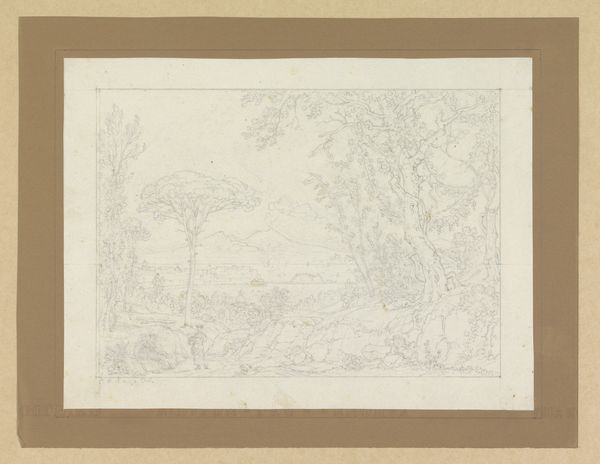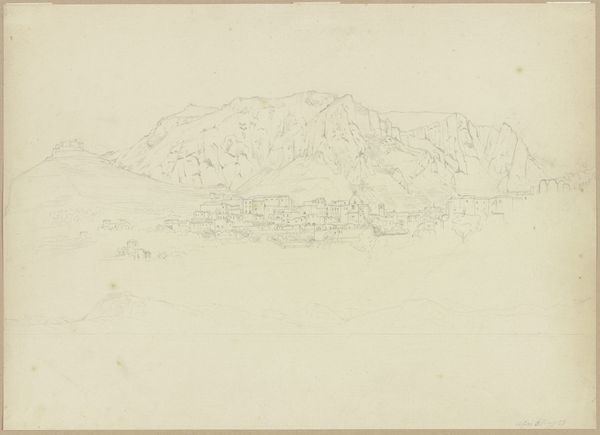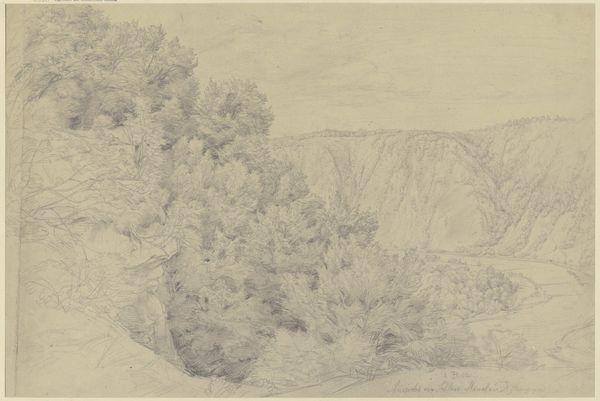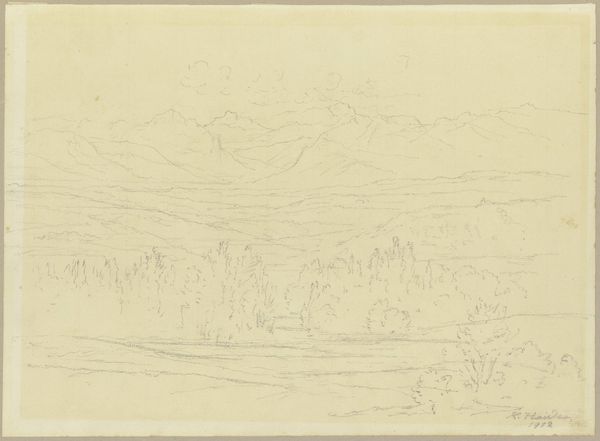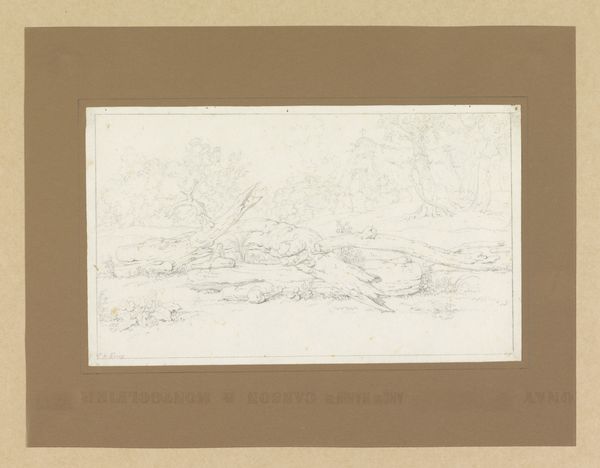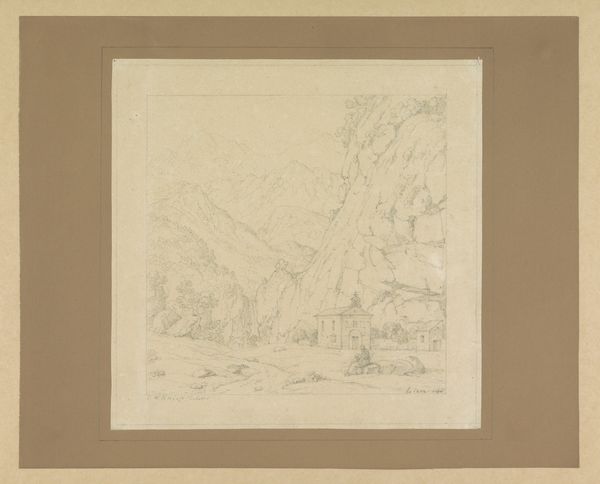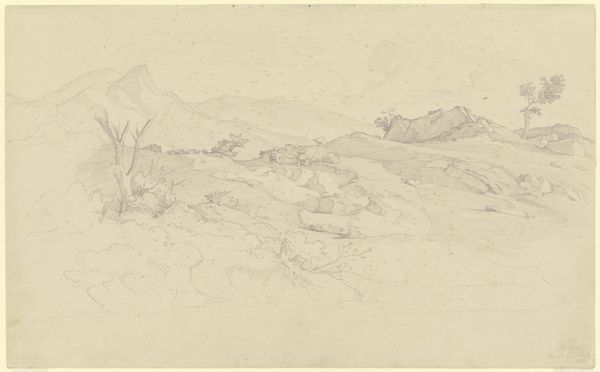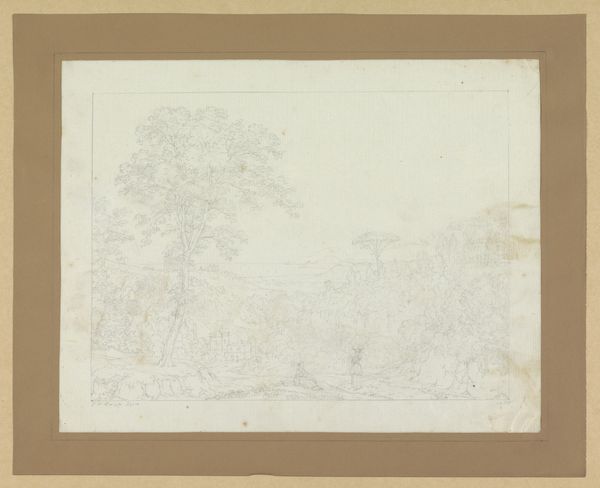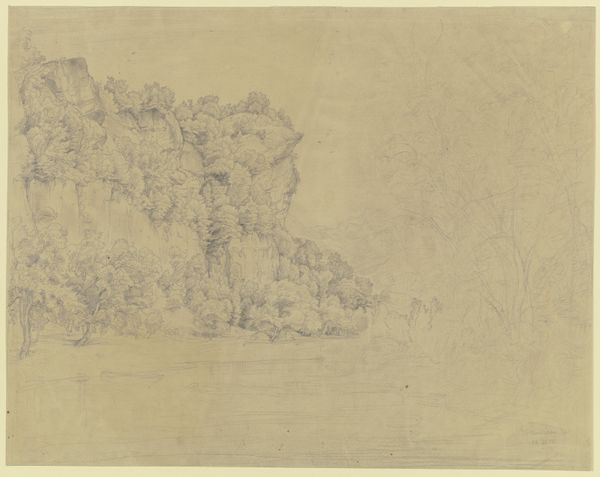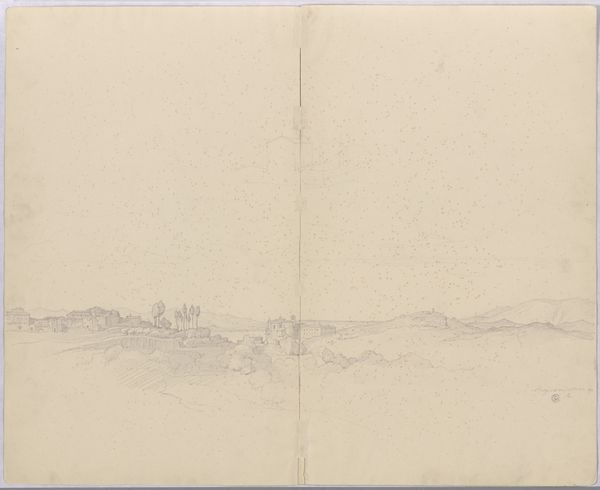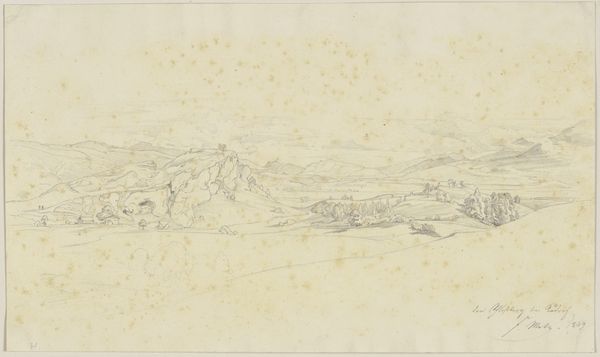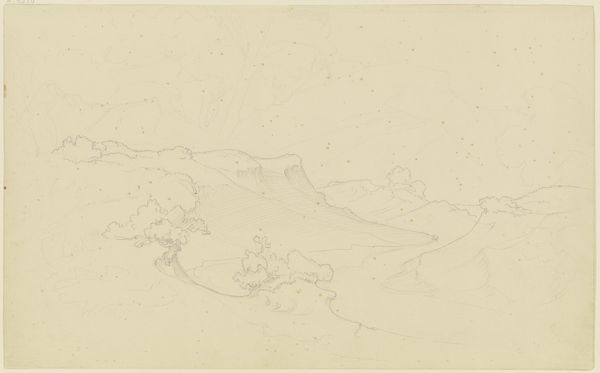
drawing, paper
#
drawing
#
landscape
#
paper
#
linocut print
#
romanticism
#
mountain
Dimensions: height 215 mm, width 274 mm
Copyright: Rijks Museum: Open Domain
Curator: Upon first glance, this drawing is serene, almost ethereal in its lightness. There's a delicate quality to the lines, evoking a sense of calm. Editor: It's Christoph Heinrich Kniep’s "Berglandschap," likely created between 1765 and 1825. The romanticism inherent in landscape drawings of that era must also acknowledge the specific cultural power dynamics present in those eras. What kind of access to resources allowed Kniep to take the time to make these beautiful works? Who might be erased from this landscape or their labor unseen? Curator: True. The blank paper seems symbolic of a pristine nature, untouched, though of course that's a fiction, then and now. I'm drawn to how the mountain forms the apex of the composition, as Kniep seems to draw the viewer’s eye right towards this point of power and elevation. How is the light dispersed and emphasized here, and why? Editor: Notice how the drawing appears unfinished in certain areas? To my eye, the formal components have an unfinished and almost dream-like quality because of it. The lack of strong, committed linework only emphasizes the ephemerality. I think it speaks to the artist’s process and intentions, allowing us to interpret both a concrete view of the terrain and, perhaps, its allegorical relationship to life or religion at the time it was made. Curator: I think you make a crucial point, by considering the historical moment within the composition of this work. Considering this specific choice and intention, who might have possessed the access or ability to capture and own that vantage point at the time? How does the cultural importance of this seemingly empty or pastoral place at the time it was drawn give the place portrayed inherent worth? Editor: Looking closer now, at the density of marks and hatching, this suggests careful consideration of how textures build out in the artwork; so it's both an incomplete project while portraying immense artistic strength in the details that he clearly was proud of sharing. Thanks for pointing that out, now my entire understanding of Kniep’s intentions and ability is completely changed. Curator: It’s these juxtapositions that I feel often highlight overlooked aspects in landscape art; it’s worth seeing them, and remembering them!
Comments
No comments
Be the first to comment and join the conversation on the ultimate creative platform.
